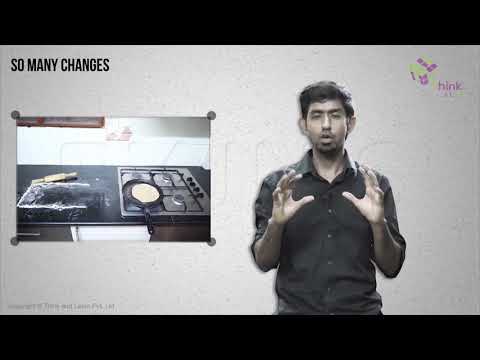We see so many changes happening around us every day such, as boiling of water, rusting of iron, melting ice, burning of paper, etc. In all these processes we observe that the system in consideration goes from an initial state to a final state where some amount of heat is absorbed from the surrounding and some amount of work W is done by the system on the surrounding. Now, for how many of such systems can the system and the surrounding be brought back to their initial state? With common examples such as rusting and fermentation, we can say that in most of the cases it is not possible. In this section, we shall learn about the reversible and irreversible processes.

Reversible and Irreversible Processes
What are Reversible Processes?
A thermodynamic process (state i → state f ) is said to be reversible if the process can be turned back such that both the system and the surroundings return to their original states, with no other change anywhere else in the universe. As we know, in reality, no such processes as reversible processes can exist. Thus, the reversible processes can easily be defined as idealizations or models of real processes, on which the limits of the system or device are to be defined. They help us in incurring the maximum efficiency a system can provide in ideal working conditions and thus the target design that can be set.
Examples of Reversible Process
Here, we have listed a few examples of Reversible Process:
- extension of springs
- slow adiabatic compression or expansion of gases
- electrolysis (with no resistance in the electrolyte)
- the frictionless motion of solids
- slow isothermal compression or expansion of gases
What are Irreversible Processes?
An irreversible process can be defined as a process in which the system and the surroundings do not return to their original condition once the process is initiated. Taking an example of an automobile engine, that has travelled a distance with the aid of fuel equal to an amount ‘x’. During the process, the fuel burns to provide energy to the engine, converting itself into smoke and heat energy. We cannot retrieve the energy lost by the fuel and cannot get back the original form. There are many factors due to which the irreversibility of a process occurs, namely:
- The friction that converts the energy of the fuel to heat energy
- The unrestrained expansion of the fluid which prevents from regaining the original form of the fuel Heat transfer through a finite temperature, the reverse of which is not possible as the forward process, in this case, is spontaneous
- Mixing of two different substances which cannot be separated as the process of intermixing is again spontaneous in nature, the reverse of which is not feasible.
Thus, some processes are reversible while others are irreversible in nature depending upon their ability to return to their original state from their final state.
Examples of Irreversible Processes
A few examples of Irreversible Processes are:
- Relative motion with friction
- Throttling
- Heat transfer
- Diffusion
- Electricity flow through a resistance
Below is the video explaining the reversible and irreversible changes:

Stay tuned with BYJU’S for more such interesting articles. Also, register to “BYJU’S – The Learning App” for loads of interactive, engaging Physics-related videos and an unlimited academic assist.




Different phrases of moon it is a reversible or irreversible and slow or fast, undesirable or desirable
Different phases of the moon is slow and desirable. Also, different phases of the moon are part of periodic changes and therefore, they keep occurring. So, it cannot be termed as either reversible or irreversible but periodic change.